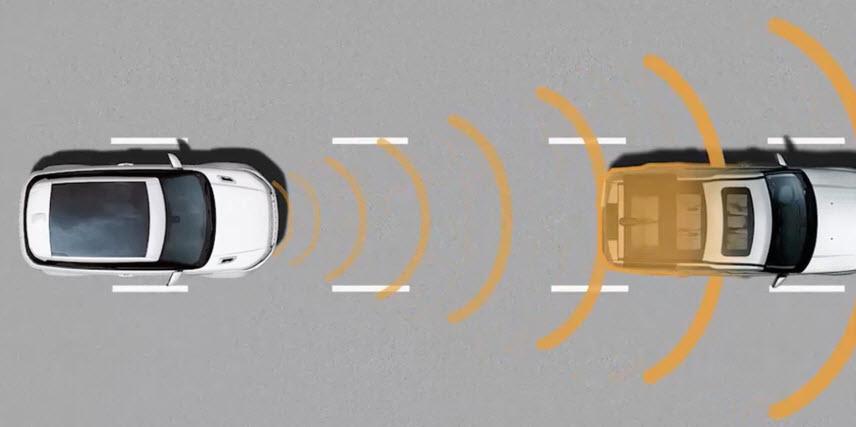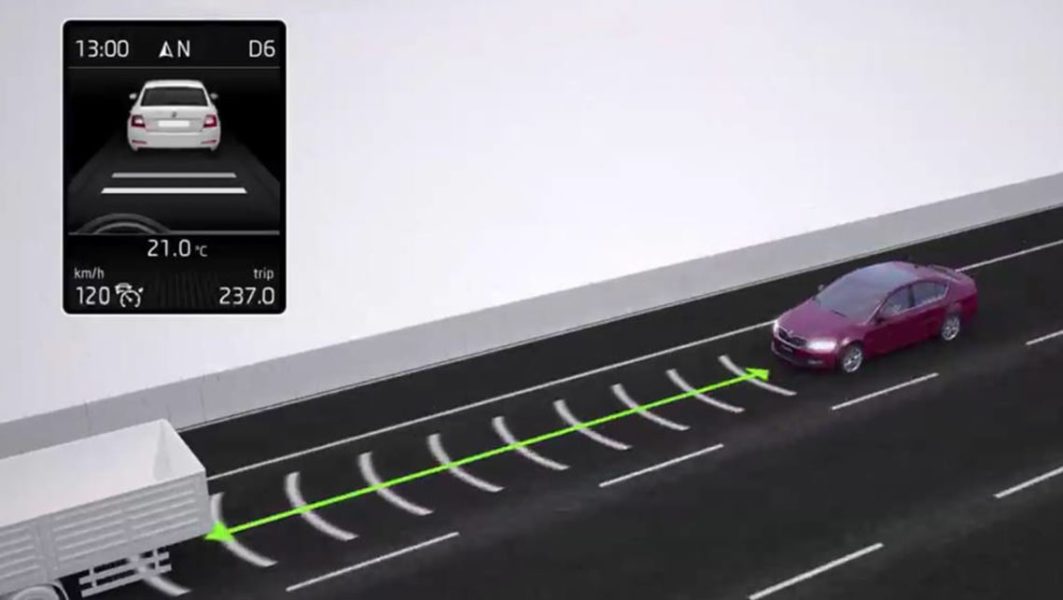
Explanation of adaptive cruise control

Skoda adaptive cruise control.
In theory, traditional cruise control systems are flawless. Find yourself a long road, pick up the speed of your choice, and with a precious little steering on the endless straight Australian highways, you can just sit back and relax.
Real life is, unfortunately, a bit more complicated, and if you've ever taken a blind turn with the cruise control set to 110 km/h, only to crash into a herd of slow moving or stationary cars, you'll know the terrible panic that comes. with a desperate search for the brake pedal.
Similarly, when the car on your left tries to change lanes in Frogger style despite being 30 km/h slower than you, the cruise control system that locks you to a certain speed changes from comfortable to fast in a hurry. dangerous.
Adaptive Cruise Control, also known as Active Cruise Control, helps mitigate these risks by automatically adapting to changing driving conditions, slowing down or speeding up as needed.
Back in 1992 (the same year that the Australian one and two cent coins were retired), Mitsubishi was putting the finishing touches on the world's first laser technology, which it called its distance warning system.
Most systems are now based on radar and continuously measure the road ahead of other vehicles.
Although it could not control the throttle, brakes, or steering, the system could identify vehicles in front and warn the driver when braking was about to begin. Elementary, of course, but it was the first step towards the adaptive cruise control systems that are used today.
By 1995, Mitsubishi had set up the system to slow down when it sensed the vehicle in front, not by braking, but by reducing the throttle and downshifting. But it was Mercedes that made the next big breakthrough in 1999 when it introduced its radar-based Distronic cruise control. The German system could not only adjust the throttle to maintain a safe distance from the car in front, but could also apply the brakes if needed.
The Distronic system was a first in the automotive industry and was showcased at the traditional Mercedes store for its latest technology: the then all-new (and around $200k) S-Class. The system was so advanced that even on its most expensive model, Distronic was an extra cost option.
For the next decade, this technology was exclusive to premium flagship models, including BMW's Active Cruise Control, added to the 7 Series in 2000, and Audi's Adaptive Cruise Control, introduced on the A8 in 2002.
But where luxury brands go, everyone soon follows, and cars with adaptive cruise control are available from almost every manufacturer in Australia. And the technology has become more accessible than ever before. For example, Volkswagen's adaptive cruise control system is used in many vehicles, and the technology is now standard on the entry-level Skoda Octavia, starting at $22,990 (MSRP).
So how does this miracle of modern technology work? Most systems are now based on radar and continuously measure the road ahead of other vehicles. The driver (that is, you) then picks up not only the desired speed, but also the distance you want to leave between you and the vehicle in front, which is usually measured in seconds.
The program will then maintain that gap, whether the vehicle in front slows down, gets stuck in traffic, or, in better systems, stops all at once. When the traffic ahead accelerates, you also accelerate, reaching a pre-set maximum speed. And if a car suddenly finds itself in your lane, it will automatically brake, maintaining the same gap between the new car in front.
The speed at which the system works, as well as exactly what situations it will react to, depends on the manufacturer, so read the user manual carefully before trusting it completely.
It's impressive technology, but it's not without its drawbacks, the biggest being that if you're not paying attention, you can be stuck behind a slow moving car for endless miles as the system automatically adjusts its speed to maintain distance. before you are finally noticed and overtaken.
But that's probably a small price to pay for a system that can keep you out of the unexpected.
How dependent are you on cruise control systems? Tell us what you think in the comments below.
